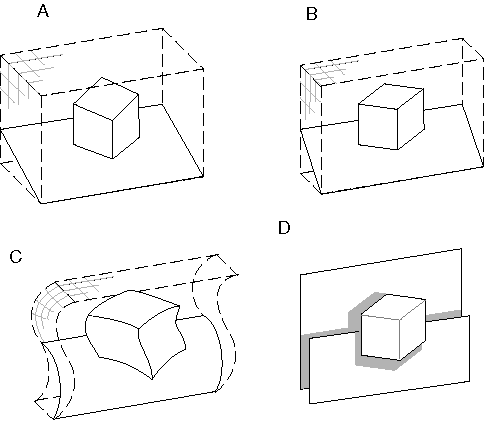I would like to apologize for the tone of my last response. Not as
excuse, but as explanation: this is about my 16th
submission to peer-reviewed journals, and so far just about every one
has been rejected for publication, and always on paradigmatic
grounds. So I hope you will understand, if not forgive my frustration
when I could see the same pattern happening all over again.
You are not an anonymous reviewer, and for that you have my deepest
respect. My criticism was intended not so much against you, or even just this
review, but the whole review process for which you are not personally
to blame. I'm sorry if my anger led me to intemperate words. I must
confess- this whole process has sometimes brought me to the very brink of my
sanity. You must admit nevertheless, that you guys did get a little
carried away in your review!
I contest however your contention that I have addressed NONE of the
Major issues you raised. The issues have already been
addressed. Its just that you, and apparently the editor, have been having
difficulty understanding my explanations. I have tried very hard to
make them clearer in the latest draft.
The idea that the neural vehicles need not resemble their phenomenal
contents, is not a proven fact, it is merely a conjecture, or
hypothesis that is no more certain
prima facie than the alternative hypothesis that the mind does
not supervene on the brain, but in fact the mind is identically
equal to the functioning of the physical brain, and is
therefore necessarily isomorphic with it. In fact, that is by
far the more parsimonious explanation that avoids many of the
profound problems with naive realism. I have tried very hard to make
this point clearer in the new Section
2.3 of the new draft of the paper. I don't expect you
to be convinced, only to recognize that identity theory is at least
equally valid logically to supervenience or vehicle/content
theories.
As for the meaning of "data expressed in spatial form", this too is a
matter of misunderstanding. I am introducing a concept for which there
is no existing exact terminology so I had to make it up as I went
along. The isomorphic image is spatial in that it is volumetric, but
it is non-topographical, like an elastic rubber model that can be
squashed flat or stretched out, all the while remaining a volumetric
representation of its undistorted form. It is not an exact replica as would be a
topographically isomorphic model, and yet it is fully spatial in the
volumetric sense that every point in three-dimensional space is
explicitly represented. And that is the key difference between this
and alternative proposals, which is why I emphasize that the model is
a literal, volumetric and spatial model, while at the
same time recognizing that it is only functionally isomorphic, because
it might also be flattened and warped, like the cortical surface,
while still remaining a volumetric representation, and thereby
encoding all of the information of spatial perception.
I had hoped that this point was made clear with the statement in the
previous draft at the end of section 5 that read:

A neurophysiological model of perceptual processing and representation
should concern itself with the actual mechanism in the brain. In the
case of a distorted representation as suggested in figure 1 C the
warping of that perceptual map would be a significant feature of the
model. A perceptual model on the other hand is concerned with the
structure of the percept itself, independent of any warping of the
representational manifold. Even for a representation which is
functionally but not structurally isomorphic, a description of the
functional transformations performed in that representation are most
simply expressed in their structurally isomorphic form, just as a
panning or scrolling function in image data is most simply expressed
as a spatial shifting of image data, even when that shifting is
actually performed in hardware in a non-isomorphic memory
array. Therefore the functional operation of a warped mechanism like
figure 1 C is most simply described as the operation of the
functionally equivalent undistorted mechanism in figure 1 A. In the
present discussion therefore, our concern will be chiefly with the
functional architecture of perception, i.e. a description of the
spatial transformations observed in perception, whatever form those
transformations might take in the physical brain, and those
transformations are most simply described as if taking place in a
physically isomorphic space.
The latest draft now has the following additional explanatory sentence that I
hope clears up this confusion in terminology.
In the discussion that follows, the terminology "spatial
representation", "data expressed in spatial form," "literal volumetric
replica of the world inside your head," "three-dimensional pattern of
opaque state units," "explicit three-dimensional replica of the
surface," and "volumetric spatial medium," will refer not to a
topographically isomorphic model of space, as suggested in figure 1 A,
but to a functionally isomorphic model of space like the warped model
in figure 1 C, in which the explicit volumetric representation is
possibly warped and distorted, but still encodes an explicit value for
every volumetric point in perceived space as well as the neighborhood
relations between those values. This is in contrast to the more
commonly assumed flattened or abstracted cortical representation
depicted in figure 1 D, where the volumetric mapping is no longer preserved.
I don't know how I can make it any clearer than that.
